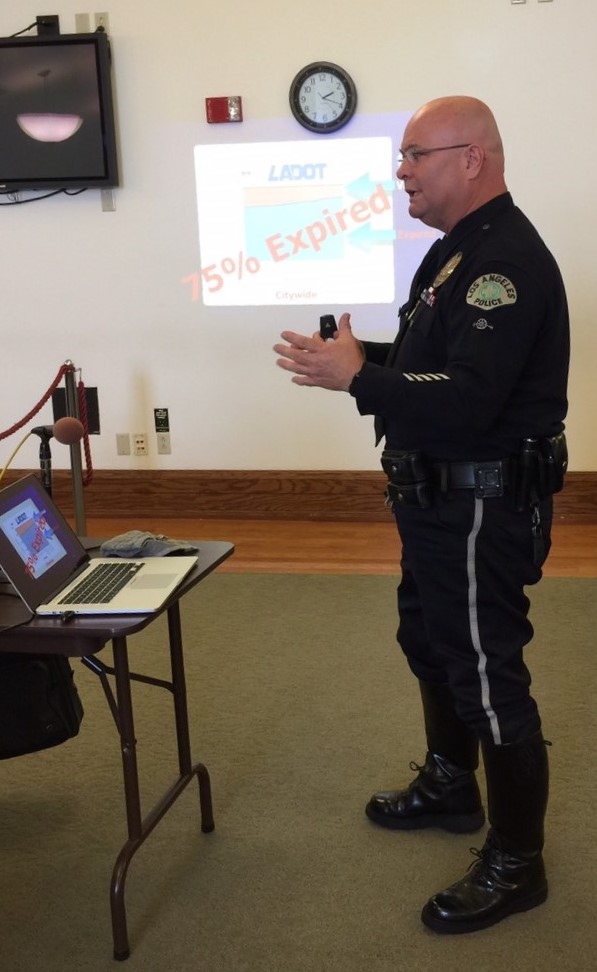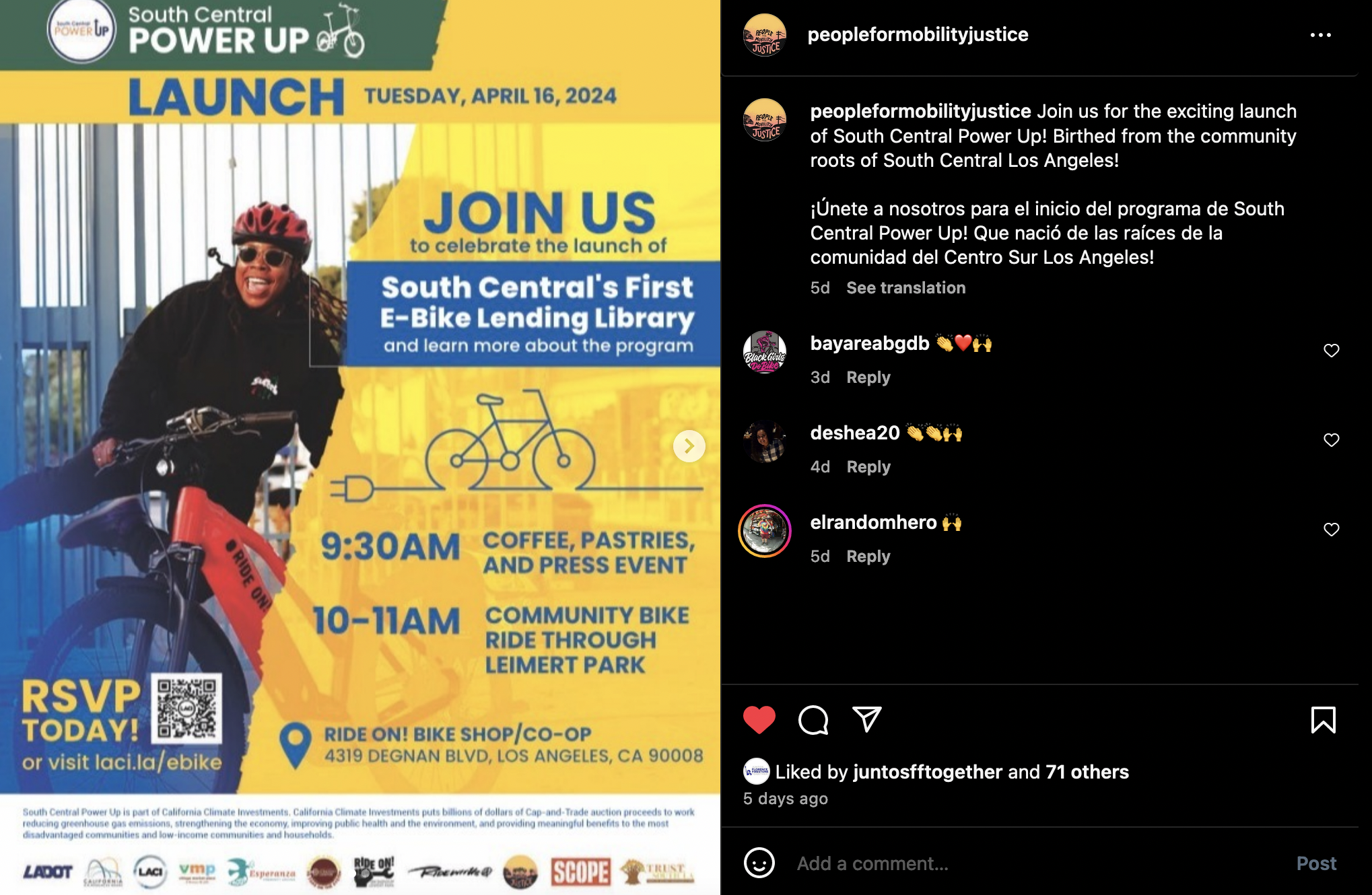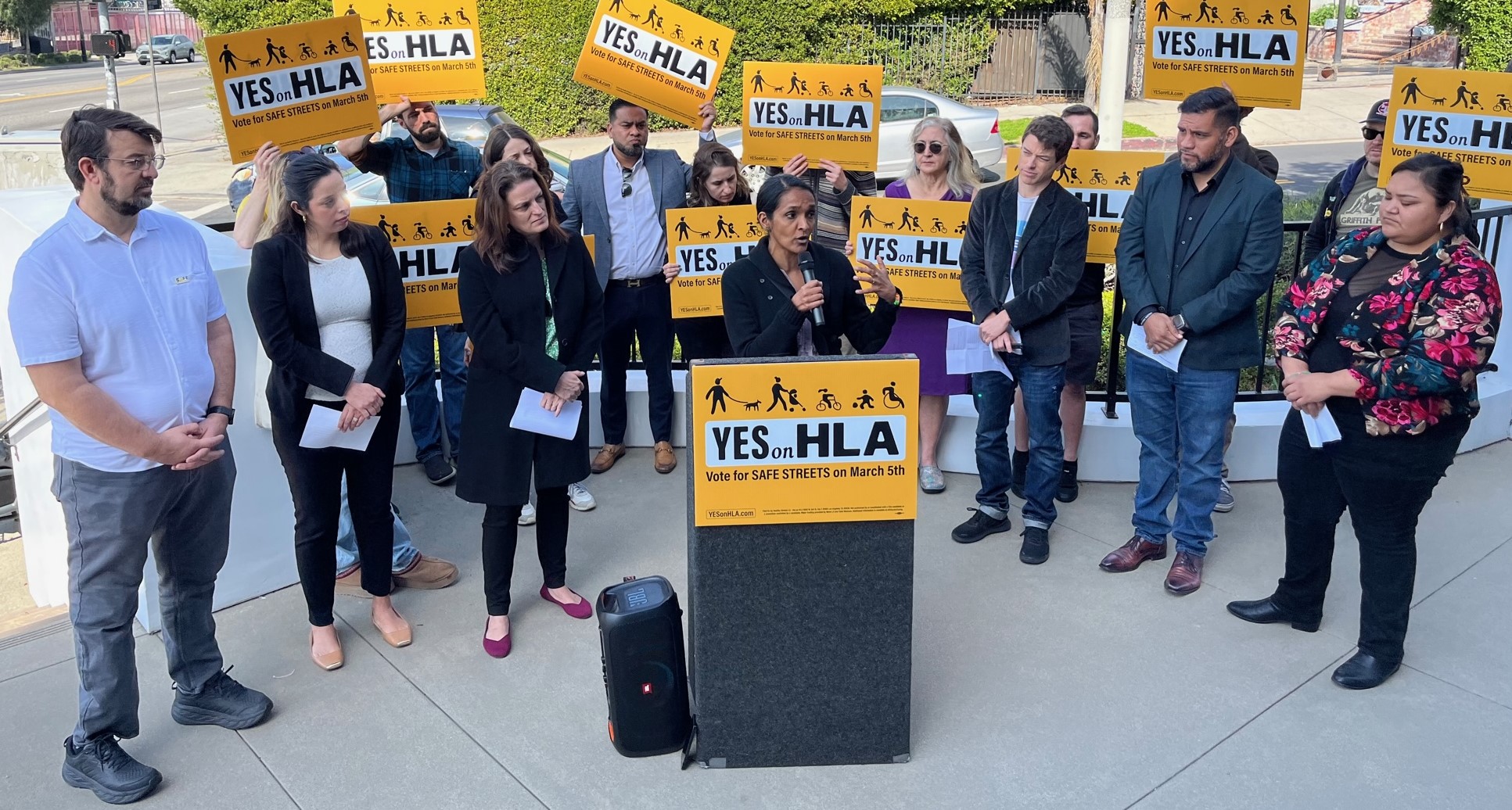L.A. City Faces Devil’s Bargain: Increase Limits To Allow Speed Enforcement
10:33 AM PDT on June 9, 2016

Over the course of the next two years, the city of Los Angeles plans to increase speed limits on many of its major streets. Why? According to the Police (LAPD) and Transportation (LADOT) Departments and due to pernicious state laws, cities are required to frequently study and increase speed limits to be able to actually ticket drivers who speed.
At the root of the problem is state "speed trap" law, which prevents cities from setting "arbitrarily low" speed limits. This law is defended by the California Highway Patrol and AAA. California requires local municipalities to periodically conduct speed studies and then to set speed limits based on how fast most drivers are already going. Cities are required to make the speed limit match the 85th percentile of prevailing traffic. Changes worsened the law in 2009 by taking away a modicum of local discretion to set slightly lower speed limits.
Combined with traffic engineering standards that favor auto speeds, this law results in a vicious cycle that favors faster and faster speeds. Speeders speed. City studies count speeders. Studies result in increases speed limits. This enables speeders to speed even more.
The state requires Los Angeles to conduct a speed study every seven to ten years. If speed surveys are not done, or if they expire, then LAPD cannot use state of the art laser speed enforcement devices.
At yesterday's Los Angeles City Council Transportation Committee, LAPD officer Troy Williams bemoaned the state of speed enforcement in Los Angeles. Per Williams, as of late last year, 75 percent of L.A. streets had expired speed surveys, meaning that LAPD's "hands are tied" and speed limits are not enforced. The figure is over 80 percent on the city's targeted Vision Zero High Injury Network: 6 percent of L.A. streets where 65 percent of all deaths and severe injuries take place. In short, L.A.'s deadliest streets are largely places where LAPD cannot enforce speed laws.
Williams stated that in 2010, LAPD issued 99,000 speeding tickets and, in 2015, that number had dropped to 16,000. According to Williams, a great deal of LAPD laser speed enforcement equipment sits on LAPD shelves as officers have turned them in due to lack of use.
Though speeding is enforced by LAPD, speed studies are done by LADOT, with revised (read: increased) speed limits approved by City Council. In the past, livability advocates have frequently vehemently opposed approval of increased speed limits.
Due to budget shortages, LADOT has been unable to keep speed studies current. In July, the new city budget restores funding for LADOT speed studies. LADOT Senior Transportation Engineer, Nader Asmar pledged to Transportation Committee Chair Mike Bonin that, under current budget levels, LADOT would complete speed studies for 100 percent of the High Injury Network in two to three years.
Even livability champion LADOT General Manager Seleta Reynolds stressed that speed surveys and resultant speed limit increases are needed. Though it is counter-intuitive, these increases for will allow LAPD to resume enforcing speeding laws. That enforcement, combined with engineering design for lower speeds, should make L.A. streets safer. Reynolds urged the councilmembers to work with their constituents to support upcoming speed increases.
Ultimately Bonin, Reynolds, and LAPD representatives blamed state law for the city's current speeding dilemmas. Hopefully as the city and LADOT set their state legislative agenda, they can work to undo the deadly state laws.
The speeding enforcement motion (15-1006) will remain in the Transportation and Public Safety Committees. Bonin directed LADOT and LAPD to return at a later date to report on the status of enforcement and engineering work to prevent speeding.
Stay in touch
Sign up for our free newsletter
More from Streetsblog Los Angeles
Metro Looks to Approve Torrance C Line Extension Alignment
Selecting the relatviely low-cost hybrid alternative should help the oft-delayed South Bay C Line extension move a step closer to reality
This Week In Livable Streets
CicLAvia returns to Venice Boulevard, Metro board committees, L.A. City Council Transportation Committee, Metro budget theater, and more




